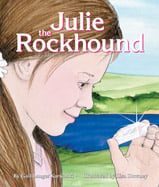Alignment to Standards for MN

| Grade | Number | Standard |
|---|---|---|
| 1 | 1.2.2.3 | Use number sense and models of addition and subtraction, such as objects and number lines, to identify the missing number in an equation such as: |
| 1 | 1.3.1.3.1 | Earth materials include solid rocks, sand, soil and water and have different observable physical properties that make them useful. Group or classify rocks in terms of color, shape and size. |
| 2 | 2.2.1.1.1 | Describe objects in terms of color, size, shape, weight, texture, flexibility, strength and the types of materials in the object. |
| 4 | 4.3.1.3.1 | Rocks are an Earth material that may vary in composition. Recognize that rocks may be uniform or made of mixtures of different minerals. |
| 4 | 4.3.1.3.2 | Rocks are an Earth material that may vary in composition. Describe and classify minerals based on their physical properties. For example: Streak, luster, hardness, reaction to vinegar. |
| K | 0.1.2.1.1 | Some objects occur in nature; others have been designed and processed by people Sort objects in to two groups: those that are found in nature and those that are human made. For example: Cars, pencils, trees, rocks. |
| K | 0.2.1.1.1 | Sort objects in terms of color, size, shape, and texture, and communicate reasoning for the sorting system. |
| K | K.3.1.2 | Sort objects using characteristics such as shape, size, color and thickness. |
| K-3 | K-3.VI.B.2 | natural resources, human resources, and human-made resources are used in the production of goods and services. |